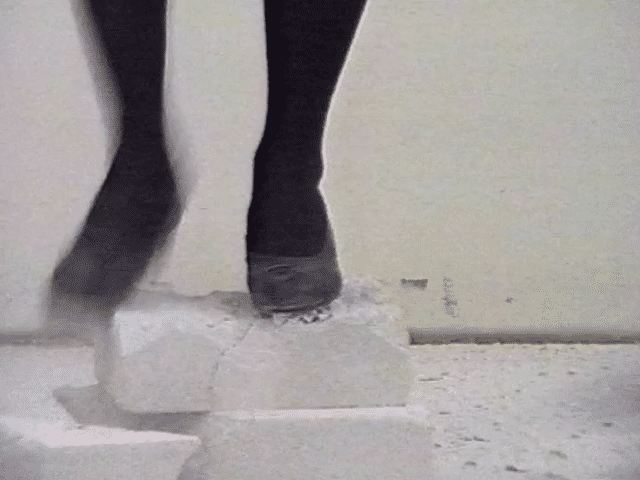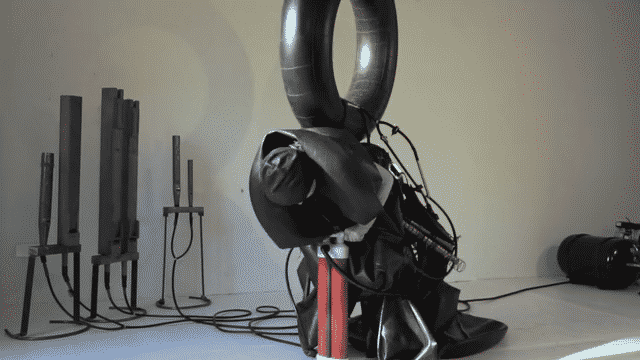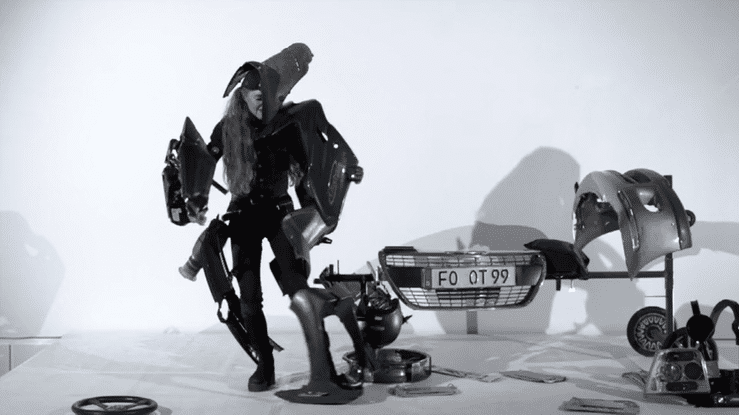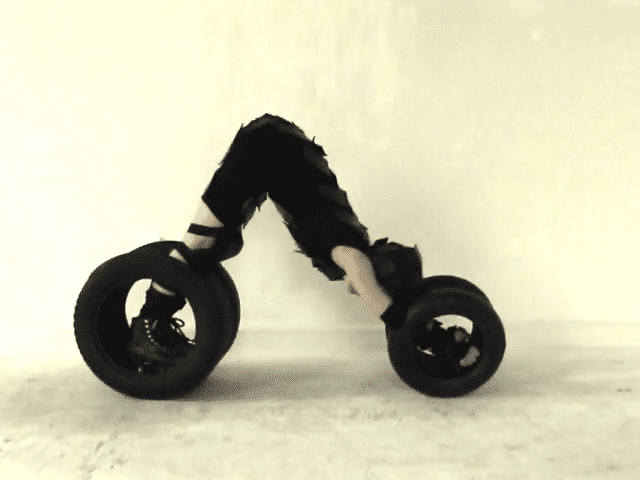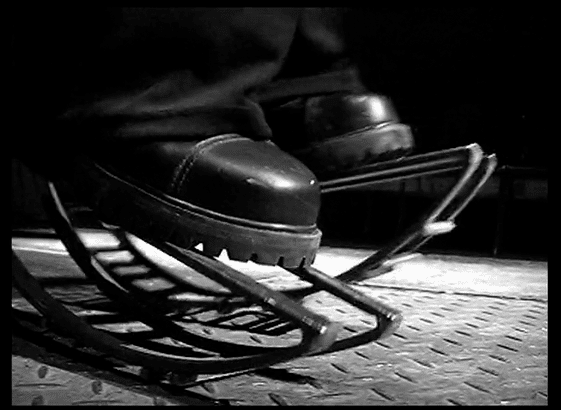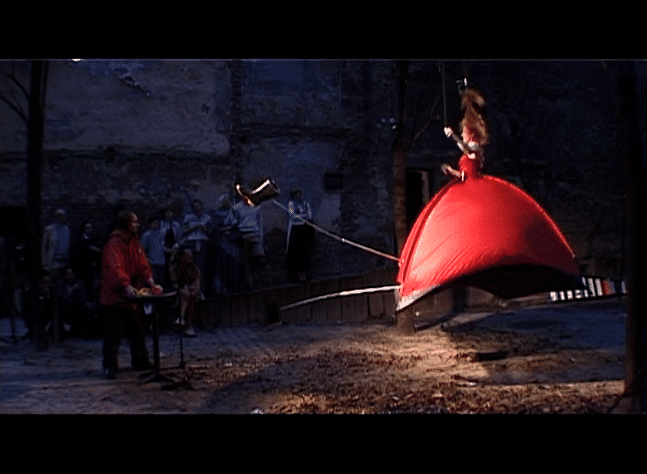The soles of the flamenco shoes are prepared with steel spikes. I stand on the Ytong stone and dance a Zapateado – without slipping. The stone breaks and is ground to dust by my spikes. The dance is simultaneously an act of destruction and a sculptural process.
Performances
Latex
Latex is made of natural rubber and is extremely resilient. I sewed a dress from this material. Its hem is attached to the floor. The latex dress pulls me to the floor. The sewing machine pulls me to the ceiling. I resist the pressure and test the tear strength of the rubber material with my entire body weight. The sewing machine begins to vibrate.
The Breathshow
An oversized airbag couch serves as a stage on which the artist develops an unstable choreography. An instrumental bandoneon outfit winds around her body, producing air sounds reminiscent of breathing waves through movement. The breath waves are electronically amplified and flow into the room as cascades of glissandos and harmonics. Sometimes the staging freezes into a shock-frozen gesture; until fresh waves of breath give the choreography new life.
Women at the stove
The performance starts with a rustic cooking show and ends with a heavy metal duet between the magnetized kitchen utensils and my body. The buffet plates stick to the magnetic dress, banging against each other to set the rhythm of the dance. The kitchen is stripped of its usual function and becomes a scenic sound space
Forgotten Instruments
Forgotten Instruments is a series of three formally different pieces that explore the interplay of sound and dance. They are connected by finely spun threads, with the performer occasionally becoming the victim of her own staging in the web of sound and action.
Sonata for pumps and bags
The airtight, welded plastic bags and pumps on these self-made instruments are attached to the body. The choreography is defined by movement sequences which compress or inflate the flexible instruments in the dance. Air travels through the valves and creates a wide spectrum of sound structures – this influences the dance flow.
Shiva´s Spare Parts
SHIVA´S SPARE PARTS is a recycling scrap music performance. There are 12 electromagnets sewn into my costume. The car parts are attracted by the magnets, and move loosely on the body. They create sounds. My body mutates into an androgynous man-machine sculpture. Through my different movements the magnetic fields change, creating surreal extended body forms and one-second sculptures in continuous change.
The Whisper of Rubber – Songlines for Truckers
When Songlines intersect with recycled truck tyres that are connected to disused organ pipes via a pipe system and the pipes are blown with the recycled air from the truck tyres, acoustic resonance fields are created. While I glide over scrap metal plates with grandma’s iron skate blades, I condense these sound frequencies.
Spare Tire
Four car tires are firmly attached to my legs and arms. Car tires are associated with movement.
However, my range of motion is limited by the heaviness of the tires. I let them slide, trembling over the floor, and lift them like weights until they fall, squeaking, to the ground.
ICE Lise Meitner
The shoes are equipped with braced double skids. In a tap dance, the skid shoes grind and roll rhythmically over steel plates. The viewer’s ear associates the metallic sound sequences with the noises of a speeding train.
Muddclubsolo
MUDDCLUBSOLO is choreographed camping in midair. The tent opens and two floating rubber boots glide towards a puddle of water. The puddle becomes a dance floor. The boots dance a pogo in the mud. I set the beat with my castanets.
6 Feet Under
The ‘crack’ of a whip is created by the supersonic speed that is generated at its end. The physicist Ernst Mach was the first to describe the connection between ‘crack’ and ‘speed’ and scientifically proved supersonic speed to be 1235 km per hour. This whip dance is dedicated to him. My moving shadow-image on the sandy earth accompanies us.
